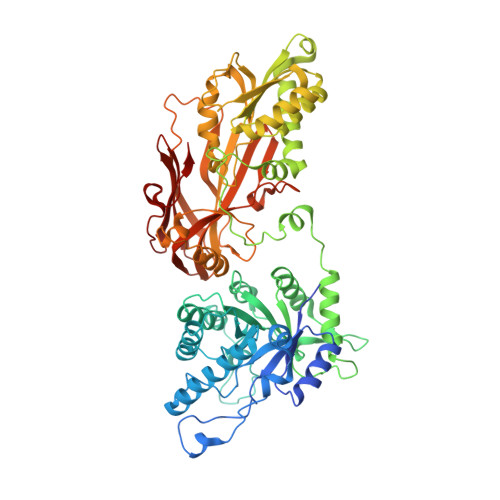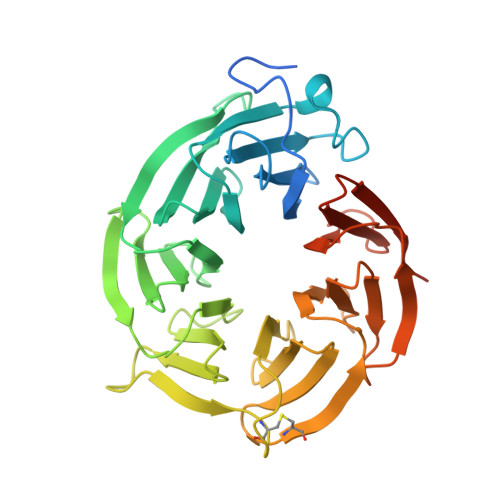The Discovery of Two Novel Classes of 5,5-Bicyclic Nucleoside-Derived PRMT5 Inhibitors for the Treatment of Cancer.
Quiroz, R.V., Reutershan, M.H., Schneider, S.E., Sloman, D., Lacey, B.M., Swalm, B.M., Yeung, C.S., Gibeau, C., Spellman, D.S., Rankic, D.A., Chen, D., Witter, D., Linn, D., Munsell, E., Feng, G., Xu, H., Hughes, J.M.E., Lim, J., Sauri, J., Geddes, K., Wan, M., Mansueto, M.S., Follmer, N.E., Fier, P.S., Siliphaivanh, P., Daublain, P., Palte, R.L., Hayes, R.P., Lee, S., Kawamura, S., Silverman, S., Sanyal, S., Henderson, T.J., Ye, Y., Gao, Y., Nicholson, B., Machacek, M.R.(2021) J Med Chem 64: 3911-3939
- PubMed: 33755451
- DOI: https://doi.org/10.1021/acs.jmedchem.0c02083
- Primary Citation of Related Structures:
7KIB, 7KIC, 7KID - PubMed Abstract:
Protein arginine methyltransferase 5 (PRMT5) is a type II arginine methyltransferase that catalyzes the post-translational symmetric dimethylation of protein substrates. PRMT5 plays a critical role in regulating biological processes including transcription, cell cycle progression, RNA splicing, and DNA repair. As such, dysregulation of PRMT5 activity is implicated in the development and progression of multiple cancers and is a target of growing clinical interest. Described herein are the structure-based drug designs, robust synthetic efforts, and lead optimization strategies toward the identification of two novel 5,5-fused bicyclic nucleoside-derived classes of potent and efficacious PRMT5 inhibitors. Utilization of compound docking and strain energy calculations inspired novel designs, and the development of flexible synthetic approaches enabled access to complex chemotypes with five contiguous stereocenters. Additional efforts in balancing bioavailability, solubility, potency, and CYP3A4 inhibition led to the identification of diverse lead compounds with favorable profiles, promising in vivo activity, and low human dose projections.
Organizational Affiliation:
Merck & Co., Inc., 33 Avenue Louis Pasteur, Boston, Massachusetts 02115, United States.



















